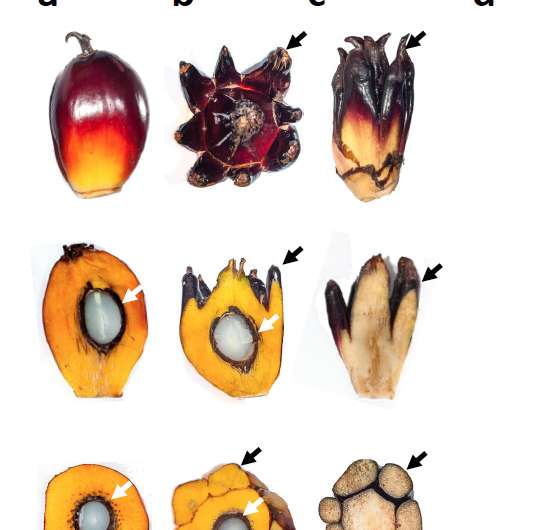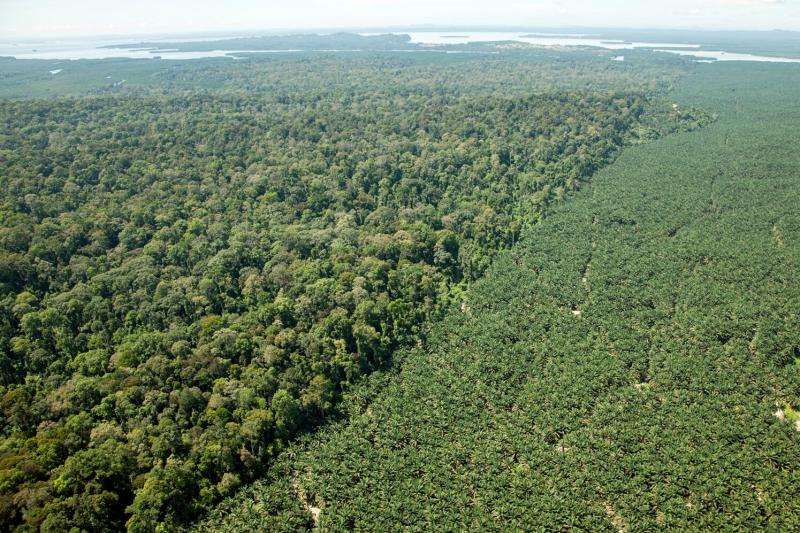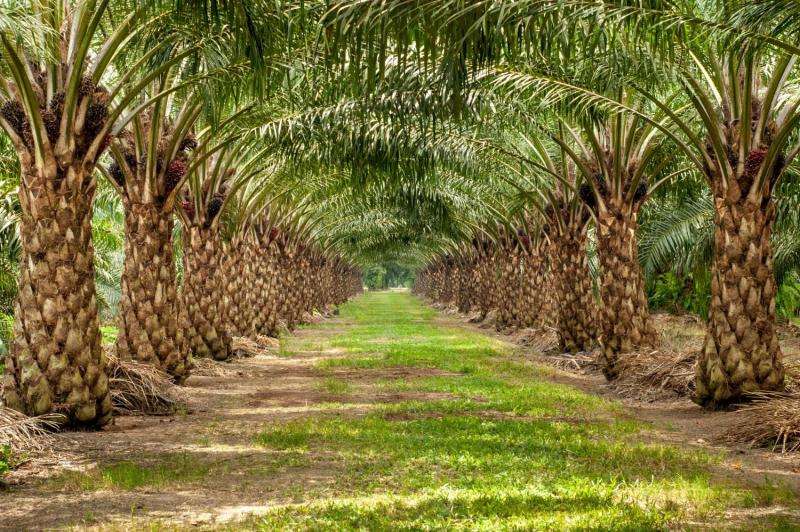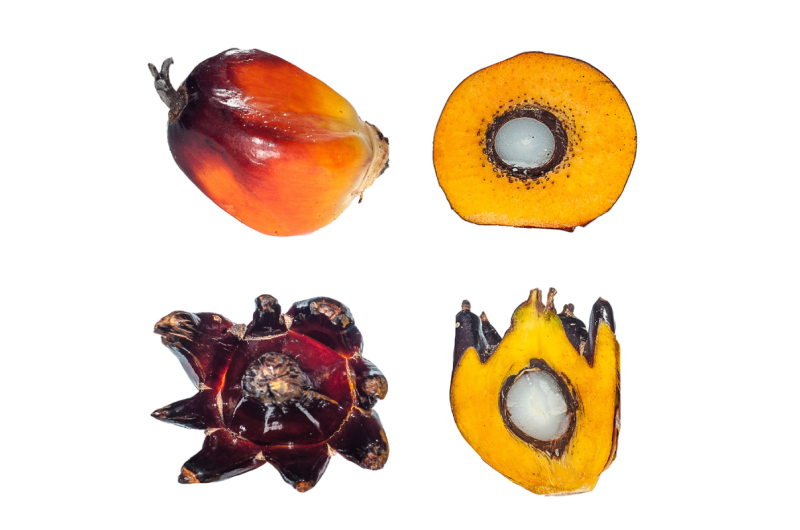What's behind million-dollar crop failures in oil palm? Would you believe bad karma?

What has spoiled tens upon tens of thousands of fledgling oil palm plants at elite corporate plantations in Malaysia and elsewhere in Southeast Asia over the last three decades? The answer to this problem, which has cost untold millions in spoilage and had adverse implications for the tropical environment, is bad karma, says an international team of genetic sleuths.
In the 1980s, a much ballyhooed new method of generating plantations brimming with clones of the highest-yielding specimens of the oil palm plant met with unanticipated disaster. Corporate investors were astonished to observe that the finest hybrids, cloned in culture dishes, often grew into barren adults bearing desiccated, worthless fruits. These plants displayed a mutant form that scientists called "mantled."
It takes oil palms about 6 years to grow to maturity. Thus, the fate of promising nurslings is not clear until long after an investment of land and time has been made. When they're growing well, the trees are valuable. Oil palm fruit and seeds are the source of nearly one-half of the worldwide supply of edible vegetable oil, and provide one of the most promising sources of biofuel.
Given the immense and still growing world demand for palm oil, it has been in industry's interest to increase yield. Helping in this effort have been plant geneticists. Cold Spring Harbor Laboratory (CSHL) Professor Robert A. Martienssen, FRS, is one plant geneticist who has taken a keen interest in the challenge of boosting yield.
"Our work in this area has been driven in part by environmental concerns," Martienssen says. "As we devise ways to reliably boost yields, we thereby lessen the economic motivation to spread oil palm holdings into sensitive rainforest areas that are important to preserve." In past work, Martienssen has been instrumental in identifying a gene called SHELL that controls fruit yield.

The solution to the mystery of the "mantled" oil palm and a demonstration of a way of preventing it appears online today in Nature. It comes down to a question of karma, according to Martienssen, along with Meilina Ong Abdullah, lead author of the paper, and her colleagues at the Malaysian Palm Oil Board (MPOB), the entity empowered to oversee that nation's world-leading oil palm industry, and researchers at Orion Genomics, a private U.S. firm that spun out of CSHL (co-founded by Martienssen).
Mantled plants have their origins in tissue grafted from prize oil palm hybrids, grown in culture dishes. Tissue samples are derived from what gourmets would call the "heart of palm" - the growing tip of the palm plant, bearing its stem cells. In this way, the best yielders can be cloned, i.e., duplicated genetically - something that can't be done when growing the next generation from seeds.
Martienssen suspected that the field in which he specialized would provide a path to understanding what went wrong in some of those culture dishes, leading to mantled oil palms. His expertise is epigenetics - an array of molecular mechanisms whose actions modify the expression of genes without altering the sequence of the DNA "letters" that "spell out" the genes.
One very common epigenetic mechanism is called methylation. The addition or removal of methyl groups (CH3) from the DNA double helix within a given gene and areas near it can result in that gene's expression being enhanced, reduced, or even prevented altogether. Using a microarray revealing methylation across the genome of several commercially important cloned varieties of oil palm, Martienssen and colleagues were able to spot a single genomic location where the absence of a methyl "tag" corresponded with a version of a gene previously linked to mantled plants.

The gene in question is the oil palm equivalent of a gene called DEFICIENS in the snapdragon plant, where it was first described. The team renamed the gene MANTLED in oil palm. The gene helps determine the fate of sexual organs, and when mutated can cause male organs to develop instead as female organs. Within MANTLED in oil palm is lodged a retrotransposon. It is one of myriad genomic invaders that lay (mostly) dormant within genes in all forms of life. This particular invader, or one very similar to it, was first spotted in rice plants, and had been named karma.
Martienssen and colleagues discovered that in mantled plants, a methyl mark present in healthy plants was missing at a location in the karma retrotransposon called a splice site. Karma sits within an intron in MANTLED. When the splice site is unmethylated, the gene does not use the normal exon to splice the intron, but instead uses karma. The RNA message copied from the gene encodes a mutant protein that gives rise to plants with worthless fruit. The team playfully dubbed this faulty gene message bad karma. In trees that develop normally and yield healthy fruits, the methyl mark is always present at the karma splice site, giving rise to a version of the correct gene message, which the team naturally calls good karma.

The team is not sure why "bad karma" happens when oil palm tissue is cloned in culture. Martienssen suspects it has something to do with the temporary separation of plant tissue from its place of origin, the stem-cell containing meristem. Meristems also contain small RNAs that help guide methyl marks and other epigenetic signals to appropriate positions along the double helix.
A simple epigenetic test, analogous to inexpensive tests currently in use during pregnancy to detect a panel of human diseases in fetuses, will readily identify bad karma and thus enable growers to cull damaged clones at the plantlet stage. This will save untold millions, and importantly, says Martienssen, will be a boon to yield since it will promote the propagation of healthy high-value hybrid clones and thus reduce the economic pressure on growers large and small to devote additional land to generate more fruit.
More information: "Loss of Karma transposon methylation underlies the mantled somaclonal variant of oil palm" appears online in Nature September 9, 2015: DOI: 10.1038/nature15365
Journal information: Nature
Provided by Cold Spring Harbor Laboratory

















